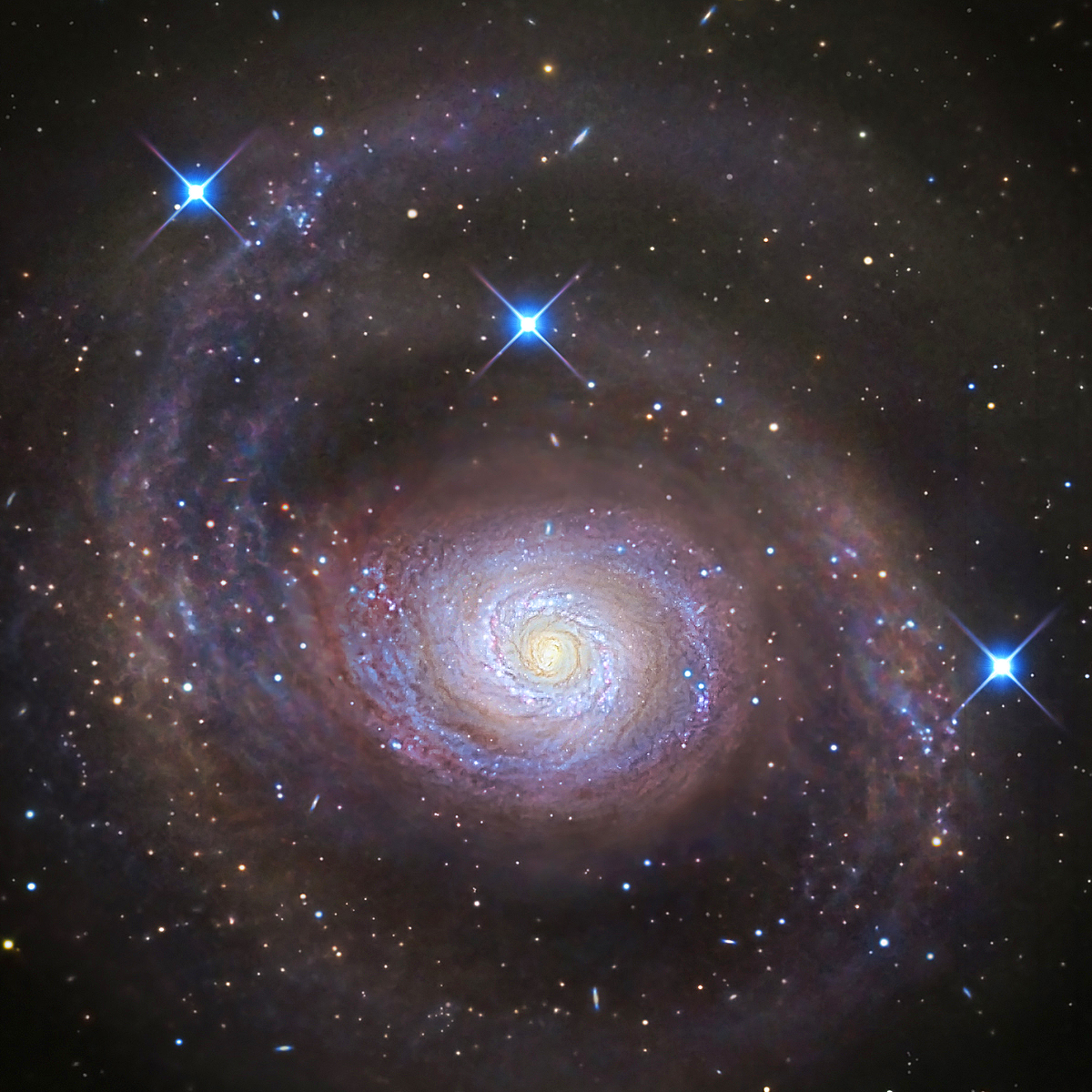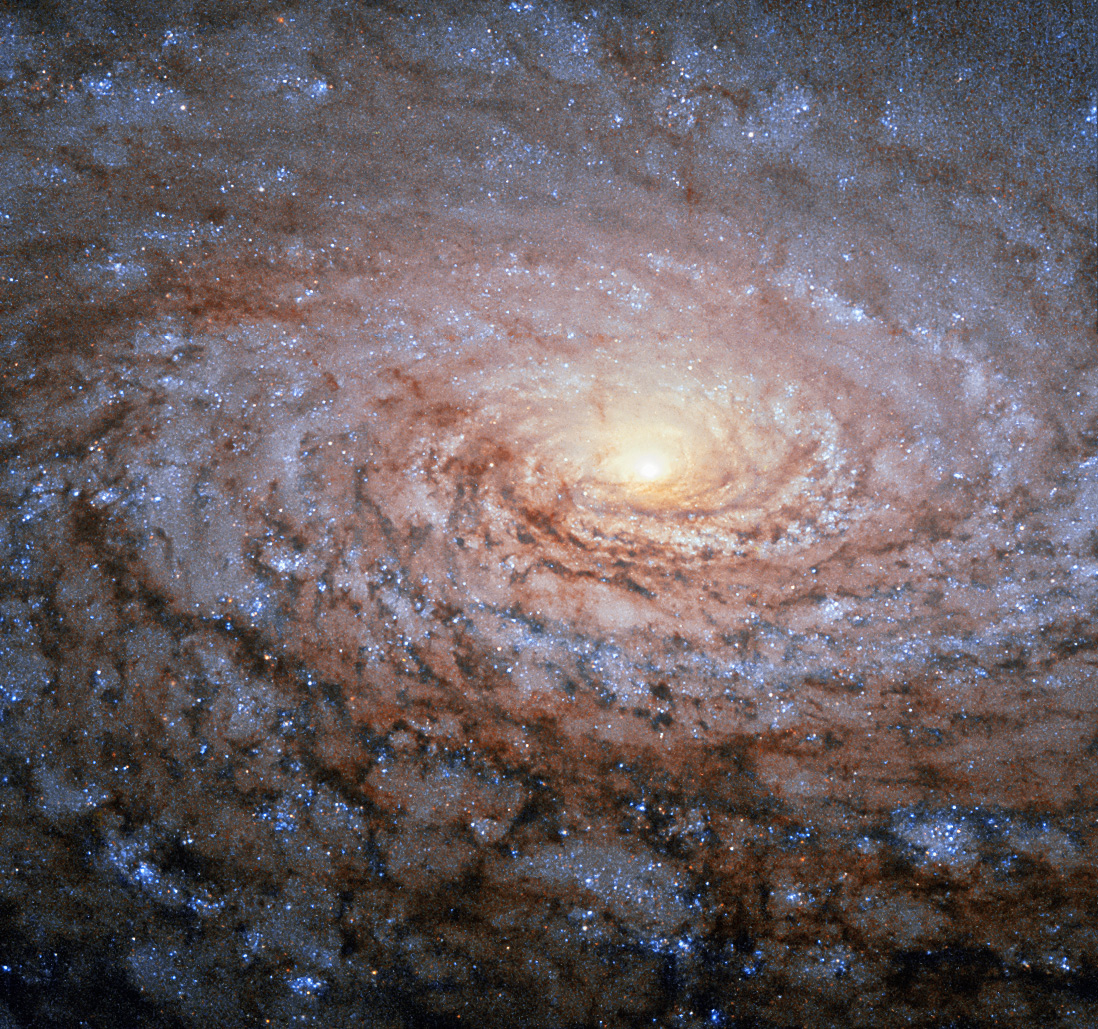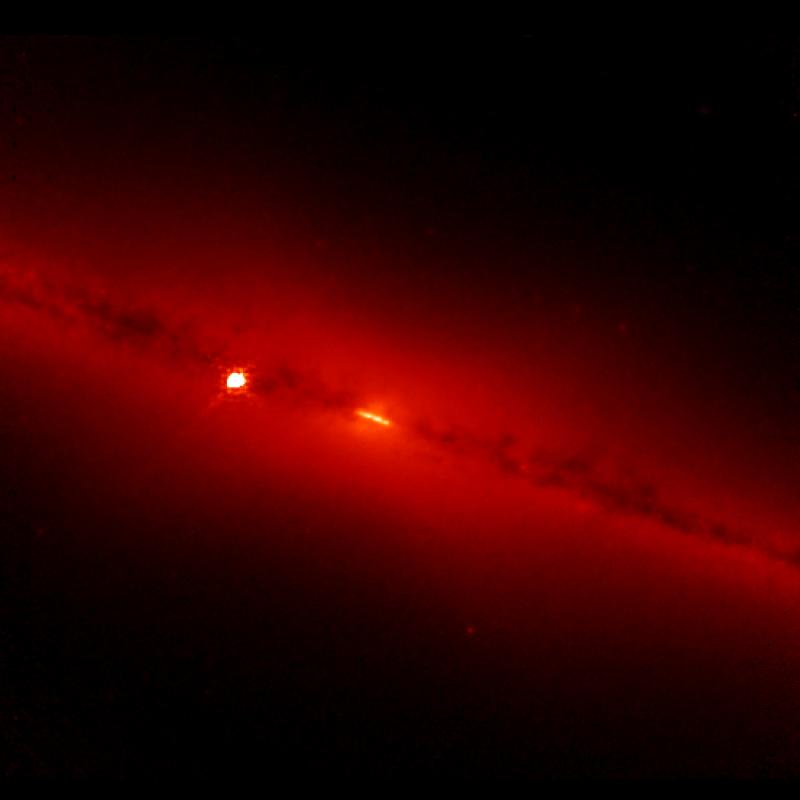|
R. Jay GaBany
Robert Jay GaBany (born September 17, 1954, in Charleston, West Virginia) is an American amateur astronomer and astrophotographer who is also known for his work with an international team of astrophysicists led by Dr. David Martínez-Delgado (Max Planck Institute for Astronomy). GaBany helped pioneer the use of modest size telescopes and off the shelf CCD-cameras to produce long exposure images that revealed ancient galactic merger remnants in the form of star streams surrounding nearby galaxies that were previously undetected or suspected. Research Using a half-meter telescope at the remote Black Bird Observatory, GaBany has been one of the world's leading amateur astrophotographers for the past decade. In recent years, GaBany has devoted hundreds of hours to work with a team of astronomers led by Martínez-Delgado of the Max Planck Institute for Astronomy in Germany to produce ultra-deep CCD images of galaxies far beyond the Local Group. GaBany's images have revealed fai ... [...More Info...] [...Related Items...] OR: [Wikipedia] [Google] [Baidu] |
Charleston, West Virginia
Charleston is the capital and List of cities in West Virginia, most populous city of West Virginia. Located at the confluence of the Elk River (West Virginia), Elk and Kanawha River, Kanawha rivers, the city had a population of 48,864 at the 2020 United States census, 2020 census and an estimated population of 48,018 in 2021. The Charleston, West Virginia metropolitan area, Charleston metropolitan area as a whole had an estimated 255,020 residents in 2021. Charleston is the center of government, commerce, and industry for Kanawha County, West Virginia, Kanawha County, of which it is the county seat. Early industries important to Charleston included salt and the first natural gas well. Later, coal became central to economic prosperity in the city and the surrounding area. Today, trade, utilities, government, medicine, and education play central roles in the city's economy. The first permanent settlement, Fort Morris, was built in fall 1773 by William Morris (pioneer), William M ... [...More Info...] [...Related Items...] OR: [Wikipedia] [Google] [Baidu] |
Galaxy Merger
Galaxy mergers can occur when two (or more) galaxies collide. They are the most violent type of galaxy interaction. The gravitational interactions between galaxies and the friction between the gas and dust have major effects on the galaxies involved. The exact effects of such mergers depend on a wide variety of parameters such as collision angles, speeds, and relative size/composition, and are currently an extremely active area of research. Galaxy mergers are important because the merger rate is a fundamental measurement of galaxy evolution. The merger rate also provides astronomers with clues about how galaxies bulked up over time. Description During the merger, stars and dark matter in each galaxy become affected by the approaching galaxy. Toward the late stages of the merger, the gravitational potential (i.e. the shape of the galaxy) begins changing so quickly that star orbits are greatly altered, and lose any trace of their prior orbit. This process is called “violent r ... [...More Info...] [...Related Items...] OR: [Wikipedia] [Google] [Baidu] |
Expedition 30
Expedition 30 was the 30th long-duration mission to the International Space Station (ISS). The expedition's first three crew members – Dan Burbank, Anton Shkaplerov and Anatoli Ivanishin – arrived on the ISS aboard Soyuz TMA-22 on 16 November 2011, during the last phase of Expedition 29. Expedition 30 formally began on 21 November 2011, with the departure from the ISS of the Soyuz TMA-02M spacecraft. The expedition ended on 27 April 2012, as Burbank, Shkaplerov and Ivanishin departed from the ISS aboard Soyuz TMA-22, marking the beginning of Expedition 31. Crew ;Source: NASA, ESA"ESA astronaut André Kuipers to spend six months on the ISS starting in 2011" |
Parade (magazine)
''Parade'' was an American nationwide Sunday newspaper magazine, distributed in more than 700 newspapers in the United States until 2022. The most widely read magazine in the U.S., ''Parade'' had a circulation of 32 million and a readership of 54.1 million. Anne Krueger has been the magazine's editor since 2015. The Nov. 13, 2022 issue was the final edition printed and inserted in newspapers nationwide. According to its final edition, ''Parade'' will continue as an e-magazine on newspaper websites. Company history The magazine was founded by Marshall Field III in 1941, with the first issue published May 31 as ''Parade: The Weekly Picture Newspaper'' for 5 cents per copy. It sold 125,000 copies that year. By 1946, ''Parade'' had achieved a circulation of 3.5 million. John Hay Whitney, publisher of the '' New York Herald Tribune'', bought ''Parade'' in 1958. Booth Newspapers purchased it in 1973. Booth was purchased by Advance Publications in 1976, and ''Parade'' became a sepa ... [...More Info...] [...Related Items...] OR: [Wikipedia] [Google] [Baidu] |
Michael D
Michael D may refer to: * Mike D (born 1965), founding member of the Beastie Boys Arts * Michael D. Cohen (actor) (born 1975), Canadian actor * Michael D. Ellison, African American recording artist * Michael D. Fay, American war artist * Michael D. Ford (1928–2018), English set decorator * Michael D. Roberts, American actor Business * Michael D. Dingman (1931–2017), American businessman * Michael D. Ercolino (1906–1982), American businessman * Michael D. Fascitelli, (born c. 1957), American businessman * Michael D. Penner (born 1969), Canadian lawyer and businessman Education * Michael D. Aeschliman (born 1948), American–Swiss educator * Michael D. Cohen (academic) (1945–2013), professor of complex systems, information and public policy at the University of Michigan * Michael D. Hanes, American music educator * Michael D. Hurley (born 1976), British Professor of Literature and Theology * Michael D. Johnson, a former President of John Carroll University * Mic ... [...More Info...] [...Related Items...] OR: [Wikipedia] [Google] [Baidu] |
Jeffrey Kluger
Jeffrey Kluger (born 1954) is a senior writer at ''Time'' magazine and author of nine books on various topics, such as ''The Narcissist Next Door'' (2014); ''Splendid Solution: Jonas Salk and the Conquest of Polio'' (2005); ''The Sibling Effect'' (2011); and '' Lost Moon: The Perilous Voyage of Apollo 13'' (1994). The latter work was the basis for Ron Howard's film '' Apollo 13'' (1995). He is also the author of two books for young adults: ''Nacky Patcher and the Curse of the Dry-Land Boats'' (2007) and ''Freedom Stone'' (2011). Early life and education Jeffrey Kluger was born in 1954 to a Jewish Family. Kluger attended Pikesville High School in Pikesville, Maryland, a northwest suburb of Baltimore. He attended the University of Maryland and earned a Bachelor of Arts degree in political science in 1976, and the University of Baltimore Law School, where he earned a Juris Doctor degree in 1979. He is a licensed attorney, and was admitted to the state bar in the Commonwealth o ... [...More Info...] [...Related Items...] OR: [Wikipedia] [Google] [Baidu] |
Time (magazine)
''Time'' (stylized in all caps) is an American news magazine based in New York City. For nearly a century, it was published Weekly newspaper, weekly, but starting in March 2020 it transitioned to every other week. It was first published in New York City on March 3, 1923, and for many years it was run by its influential co-founder, Henry Luce. A European edition (''Time Europe'', formerly known as ''Time Atlantic'') is published in London and also covers the Middle East, Africa, and, since 2003, Latin America. An Asian edition (''Time Asia'') is based in Hong Kong. The South Pacific edition, which covers Australia, New Zealand, and the Pacific Islands, is based in Sydney. Since 2018, ''Time'' has been published by Time USA, LLC, owned by Marc Benioff, who acquired it from Meredith Corporation. History ''Time'' has been based in New York City since its first issue published on March 3, 1923, by Briton Hadden and Henry Luce. It was the first weekly news magazine in the United St ... [...More Info...] [...Related Items...] OR: [Wikipedia] [Google] [Baidu] |
American Astronomical Society
The American Astronomical Society (AAS, sometimes spoken as "double-A-S") is an American society of professional astronomers and other interested individuals, headquartered in Washington, DC. The primary objective of the AAS is to promote the advancement of astronomy and closely related branches of science, while the secondary purpose includes enhancing astronomy education and providing a political voice for its members through lobbying and grassroots activities. Its current mission is to enhance and share humanity's scientific understanding of the universe as a diverse and inclusive astronomical community. History The society was founded in 1899 through the efforts of George Ellery Hale. The constitution of the group was written by Hale, George Comstock, Edward Morley, Simon Newcomb and Edward Charles Pickering. These men, plus four others, were the first Executive Council of the society; Newcomb was the first president. The initial membership was 114. The AAS name of the so ... [...More Info...] [...Related Items...] OR: [Wikipedia] [Google] [Baidu] |
Messier 94
Messier 94 (also known as NGC 4736) is a spiral galaxy in the mid- northern constellation Canes Venatici. It was discovered by Pierre Méchain in 1781, and catalogued by Charles Messier two days later. Although some references describe M94 as a barred spiral galaxy, the "bar" structure appears to be more oval-shaped. The galaxy has two ring structures. Structure M94 is classified as having a low ionization nuclear emission region (LINER) nucleus. LINERs in general are characterized by optical spectra that reveal that ionized gas is present but the gas is only weakly ionized (i.e. the atoms are missing relatively few electrons). M94 has an inner ring with a diameter of 70 arcseconds (″) (given its distance, about ) and an outer ring with a diameter of 600″ (about ). These rings appear to form at resonance points in the disk of the galaxy. The inner ring is the site of strong star formation activity and is sometimes referred to as a starburst ring. This star for ... [...More Info...] [...Related Items...] OR: [Wikipedia] [Google] [Baidu] |
Sunflower Galaxy
Messier 63 or M63, also known as NGC 5055 or the seldom-used Sunflower Galaxy, is a spiral galaxy in the northern constellation of Canes Venatici with approximately 400 billion stars. M63 was first discovered by the French astronomer Pierre Méchain, then later verified by his colleague Charles Messier on June 14, 1779. The galaxy became listed as object 63 in the Messier Catalogue. In the mid-19th century, Anglo-Irish astronomer Lord Rosse identified spiral structures within the galaxy, making this one of the first galaxies in which such structure was identified. The shape or morphology of this galaxy has a classification of SAbc, indicating a spiral form with no central bar feature (SA) and moderate to loosely wound arms (bc). There is a general lack of large-scale continuous spiral structure in visible light, so it is considered a ''flocculent galaxy''. However, when observed in the near infrared, a symmetric, two-arm structure is seen. Each arm wraps 150° around the ga ... [...More Info...] [...Related Items...] OR: [Wikipedia] [Google] [Baidu] |
NGC 5907
NGC 5907 (also known as Knife Edge Galaxy or Splinter Galaxy) is a spiral galaxy located approximately 50 million light years from Earth. It has an anomalously low metallicity and few detectable giant stars, being apparently composed almost entirely of dwarf stars. It is a member of the NGC 5866 Group. NGC 5907 has long been considered a prototypical example of a warped spiral in relative isolation. In 2006, an international team of astronomers announced the presence of an extended tidal stream surrounding the galaxy that challenges this picture and suggests the gravitational perturbations induced by the stream progenitor may be the cause for the warp. The existence of part of these tidal streams has been recently challenged by some deeper surveys. The galaxy was discovered in 1788 by William Herschel. Supernova 1940A was in this galaxy. An ultraluminous X-ray source is located in the galaxy. Location :The edge-on galaxy is seen in the constellation Draco, near the sta ... [...More Info...] [...Related Items...] OR: [Wikipedia] [Google] [Baidu] |
NGC 4013
NGC 4013 is an edge-on barred spiral galaxy about 55 million light-years away in the constellation Ursa Major. The disk of NGC 4013 shows a distinct "peanut"-shaped bulge in long exposure photographs that N-body computer simulations suggest is consistent with a stellar bar seen perpendicular to the line of sight. A recent deep color image of NGC 4013 revealed a looping tidal stream of stars extending over 80 thousand light-years from the Galactic Center. This structure is thought to be the remnants of a smaller galaxy that was torn apart by tidal forces as it collided with NGC 4013. Supernova SN 1989Z was discovered on December 30, 1989 at apparent magnitude 12. NGC 4013 is a member of the Ursa Major Cluster. See also * Cigar Galaxy Messier 82 (also known as NGC 3034, Cigar Galaxy or M82) is a starburst galaxy approximately 12 million light-years away in the constellation Ursa Major. It is the second-largest member of the M81 Group, with the Galaxy#Isophotal diameter ... [...More Info...] [...Related Items...] OR: [Wikipedia] [Google] [Baidu] |








